Ancient (before 500 CE)

The Boy Prodigy: Xiang Tuo
These two images from the Later Han dynasty (2nd century CE) depict the most famous child in early Chinese literature, Xiang Tuo (pronounced She-Ang Too-o).

Egyptian Mummy Coffin
The same image can be valued differently over time and in different cultures. Take, for example, the long journey in time and space of images and hieroglyphic writing that cover the surfaces of the coffins of mummies from Egypt.

Indus Valley Climbing Monkey Toy
The monkey figurine shown in two views is mounted on a wooden platform for display, but it was apparently designed with the ability to slide down a string or thin rod so as to appear to climb or jump.
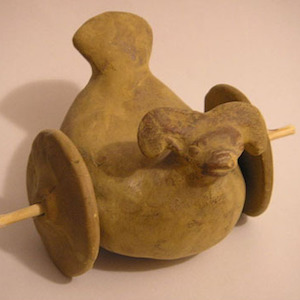
Indus Valley Wheeled Ram Toy
The hand-modeled, terracotta, wheeled figurine of a bird with a ram's head was excavated from an archaeological site in the Indus Valley called Mohenjo-daro, a city that flourished between 2600 and 1900 BCE.

Neolithic Baby Burial
This infant burial is from Çatalhöyük , a Neolithic settlement in Turkey that was occupied continuously for 2,500 years, between 8000 and 6400 BCE. The infant was between six months and one year old, and the burial demonstrates great care.

Sibling Burial
The two children whose skeletons are shown in this photograph were both under 10 years of age, and were probably buried at the same time. An earlier burial of a baby was found at a slightly lower level in the space between them.
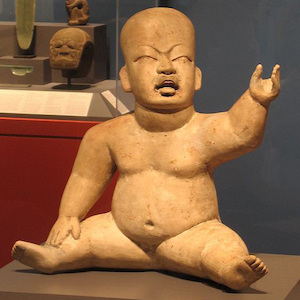
Olmec Ceramic Baby Figurine
This baby figurine of a pudgy toddler is one of many similar examples of ceramic sculptures of infants belonging to an ancient Mesoamerican ceramic tradition that flourished during the first millennium B.C.E.
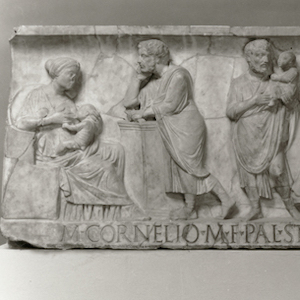
M. Cornelius Statius
Death is part of every society, but the rituals and objects surrounding death have varied across centuries and continents.
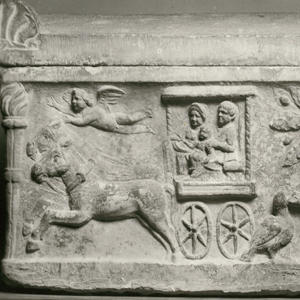
Child’s Life Course
Death is part of every society, but the rituals and objects surrounding death have varied across centuries and continents.
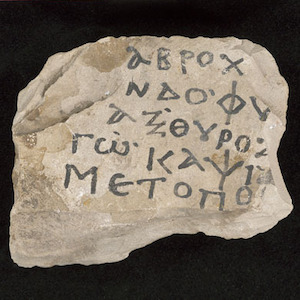
Ostracon
In Greek and Roman times children and adults often wrote on ostraca (that is, pieces of broken pottery and limestone flakes). They were costless and convenient writing materials. On this flat limestone piece a student practiced letters of the alphabet.